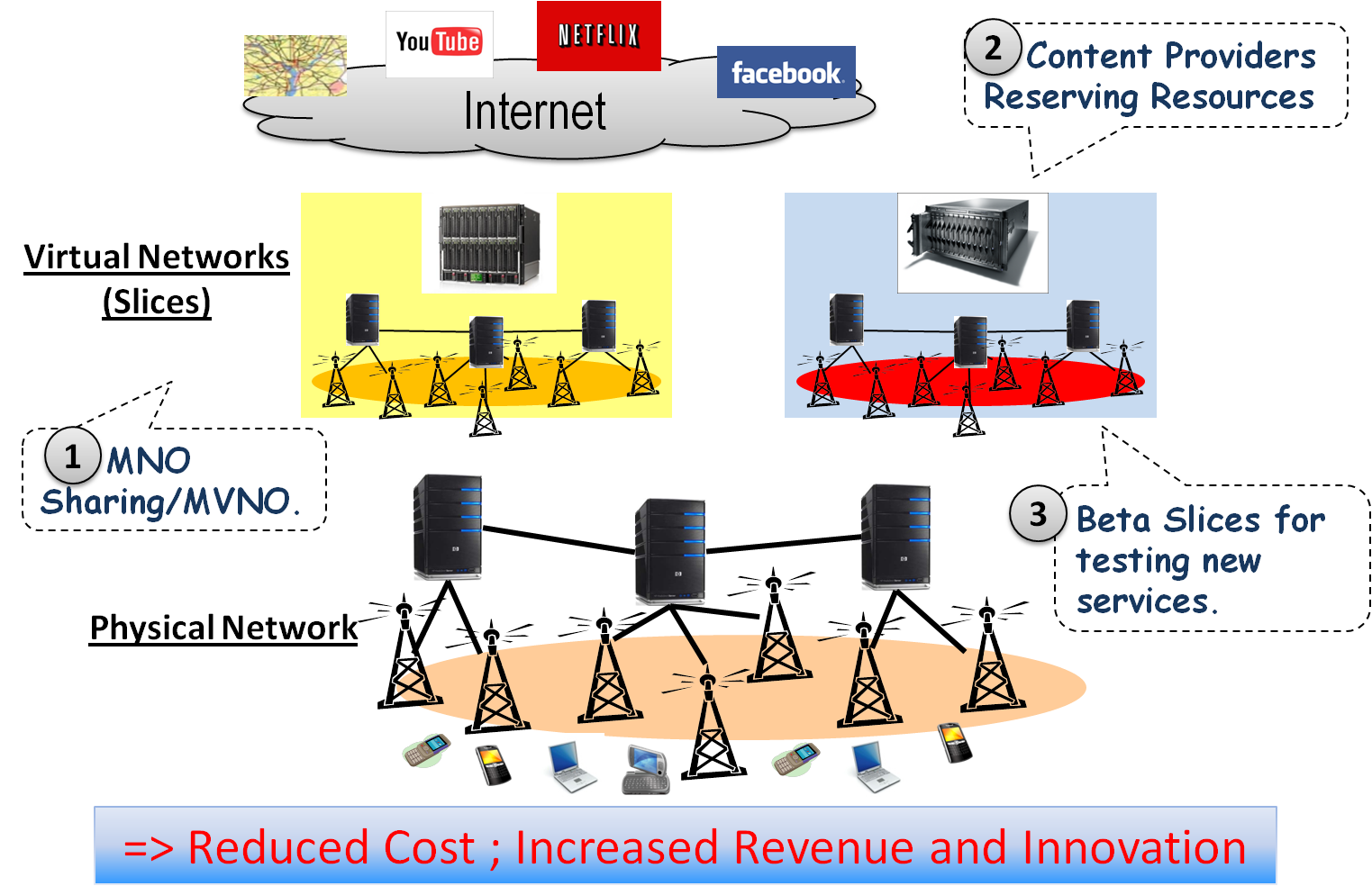 NVS is a substrate within the
basestation for virtualizing the wireless resources of a
cellular network, such as a WiMAX or an LTE network.
NVS is a substrate within the
basestation for virtualizing the wireless resources of a
cellular network, such as a WiMAX or an LTE network. Conference [ACM MobiCom 2010] Journal [TON 2012]
CellSlice is an overlay scheduler designed for mobile core gateways to achieve the functionality of NVS with minimal modifications to the basestations.
Conference [Comsnets 2013]
NetShare is designed as a novel two-level scheduler split between the mobile gateway and the cellular basestations to effectively manage and allocate the wireless resources of the radio access network composed of multiple basestations among multiple different entities. It leverages NVS as the link layer scheduler in the basestations.
Conference [ICNP 2013]
Virtualizing wireless resources in cellular networks fosters several interesting deployment scenarios that are of interest to both academia and industry:
- Active RAN sharing: One radical change that is
receiving considerable attention recently is active RAN
(Radio Access Network) sharing among Mobile Network
Operators (MNOs). RAN sharing enables significant reduction
in equipment in low traffic areas and results in at-least
100% increased rollout speed with a given cost.
- Mobile Virtual Network Operators (MVNO): In the recent past, several MVNOs have emerged as strong players in the cellular market providing enhanced services. Such MVNOs often do not own spectrum and rely on sharing the wireless resources of a MNO in that region. Virtualization helps partition the wireless resources in an MNO’s network effectively, thereby encouraging stricter and fine-grained SLAs between MVNOs and MNOs.
- Corporate Bundle Plans: Currently, network operators offer data plans to enterprises and corporations that allow sharing of bandwidth dynamically across their users. However, no bandwidth guarantees are provided. Virtualization may help realize better guarantees on resource allocation, and hence fosters more sophisticated data plans.
- GENI and Beyond: Virtualization can help researchers evaluate their new ideas on commercial base stations and deployments.
- Controlled evaluation: Virtualization enables MNOs to isolate partial wireless resources to deploy and test novel ideas without affecting the operational networks. Currently, MNOs often use dedicated (small scale) deployments to test new ideas.
- Services with Leased Networks(SLNs): With the increased use of wireless and mobile networks for Internet services, we envision application service providers reserving bandwidth with MNOs and paying on the behalf of their users to enhance users’ quality of experience. Virtualization helps in ensuring that such reservations are met.